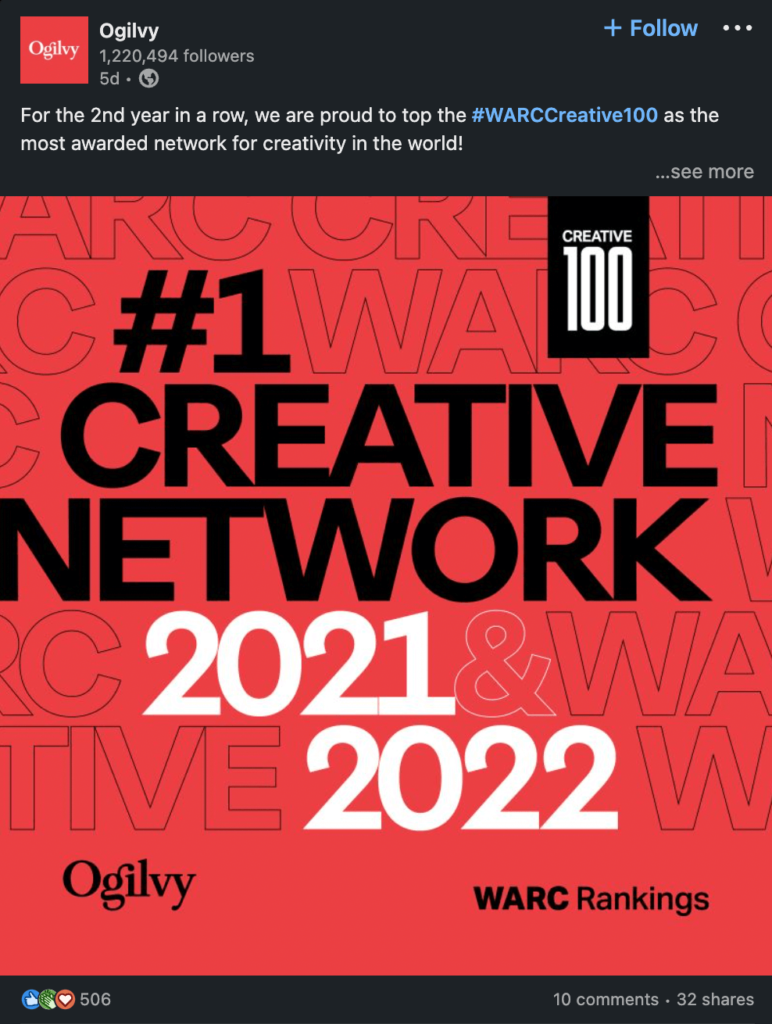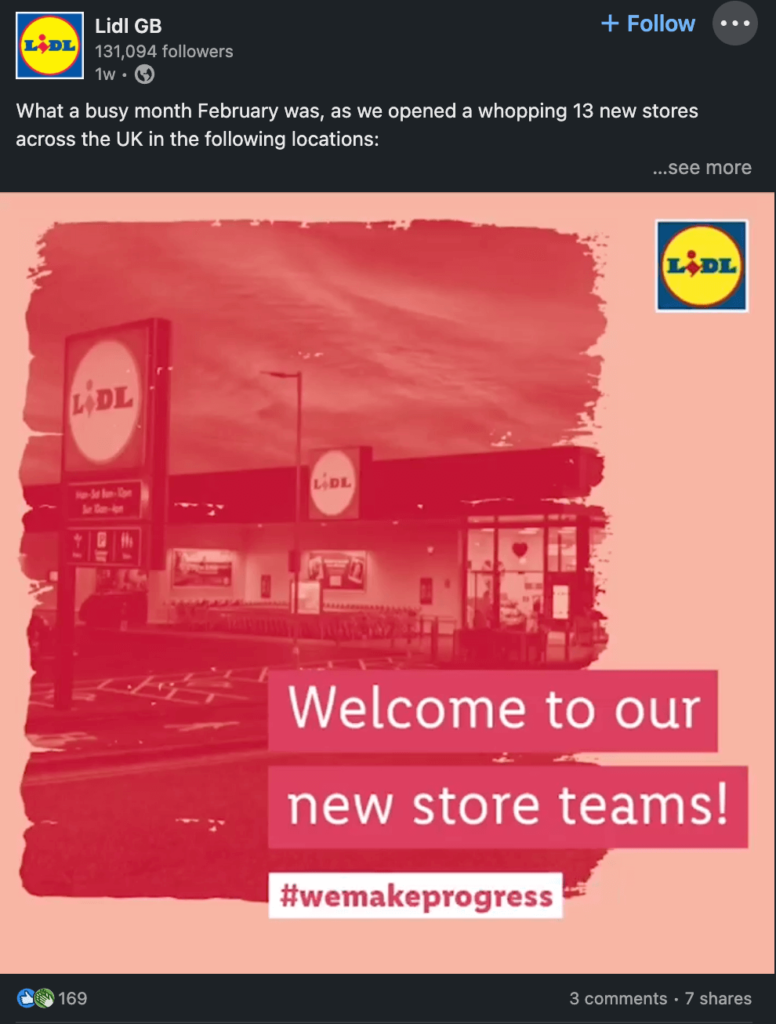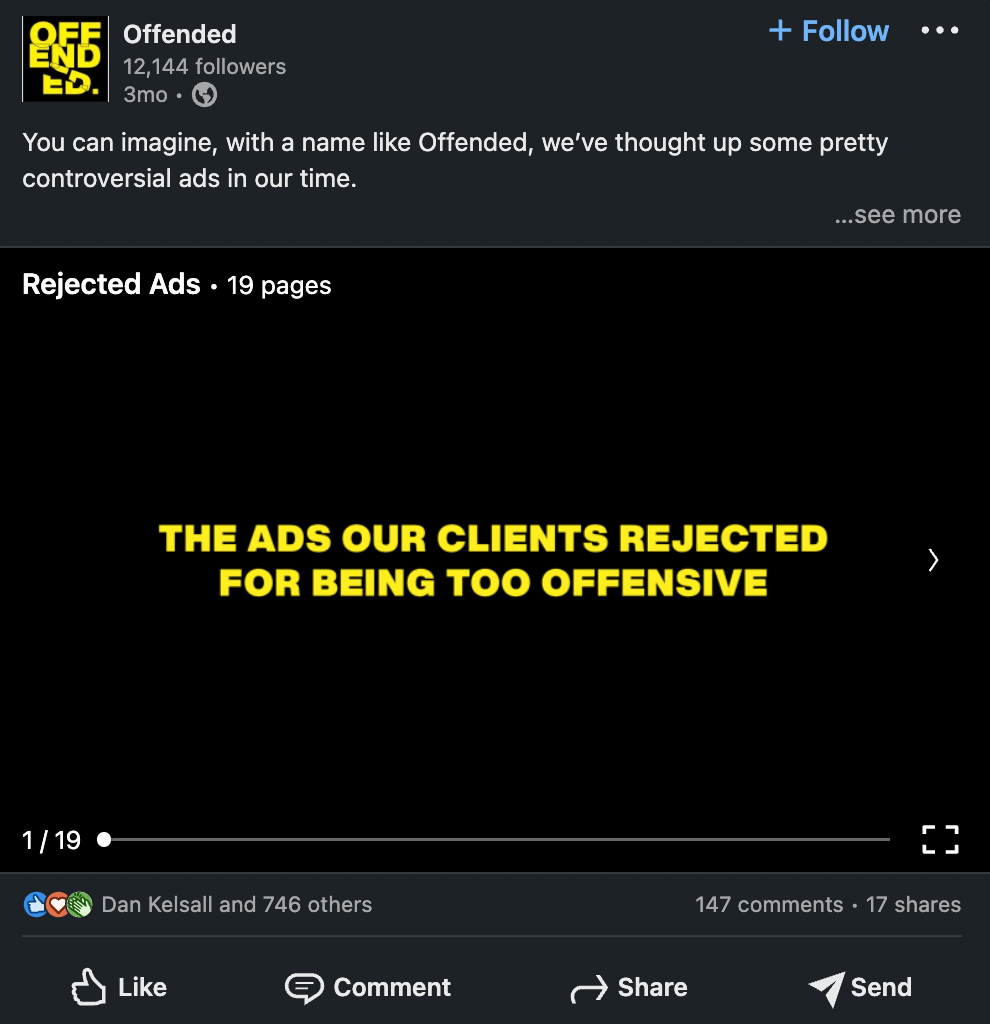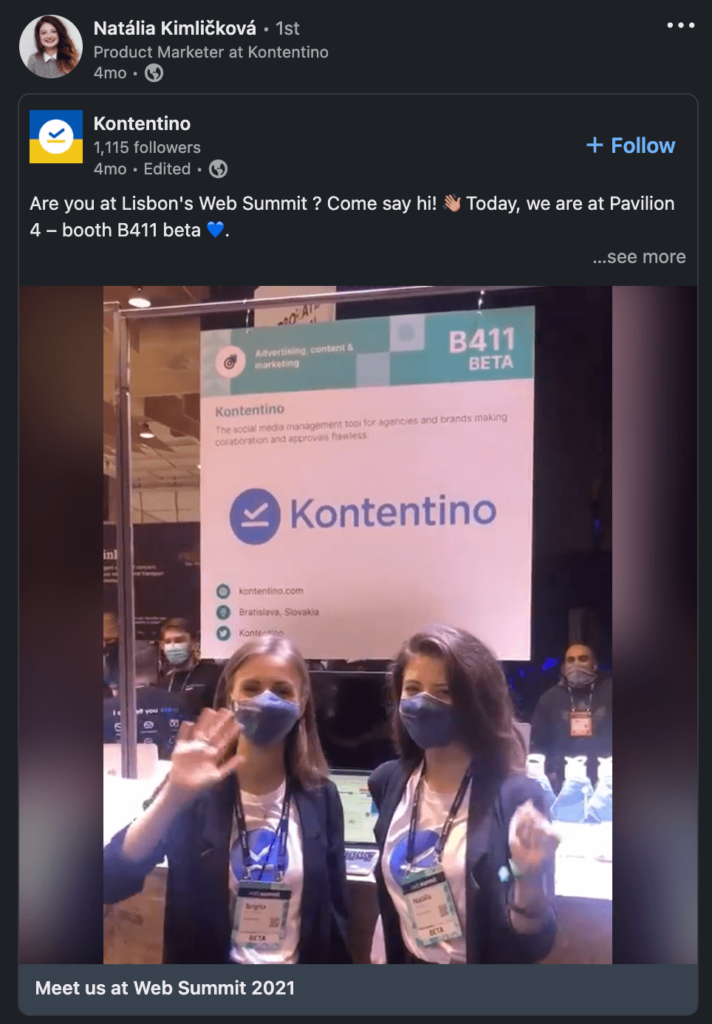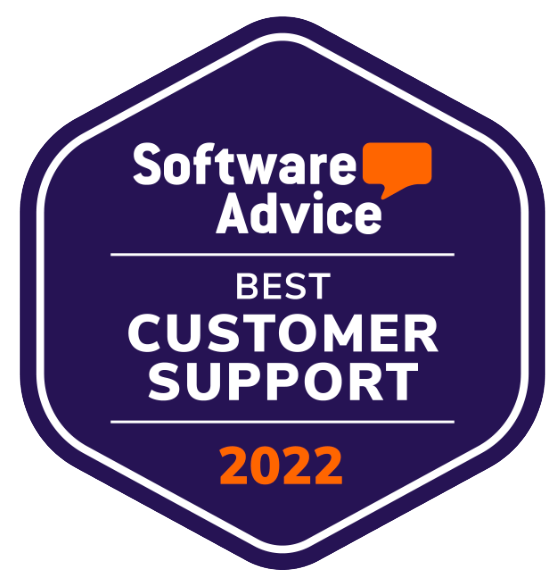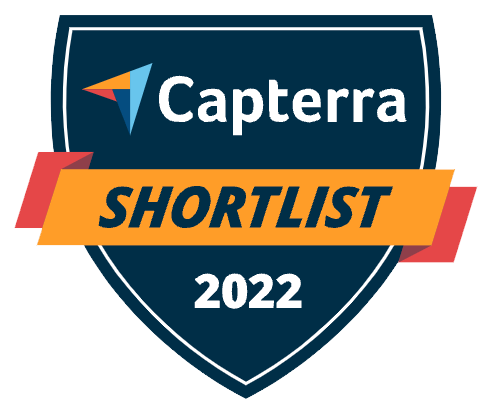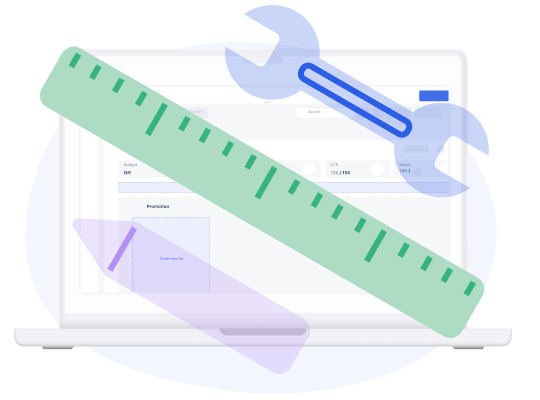When LinkedIn was first created, it was basically a resume book on the internet. People would connect with others they had worked with in the past and share their experiences. The platform has come a long way since then – it is now used as a powerful business tool that can help you grow your company.
While LinkedIn is not brand new, it does seem to have taken off in the last few years. This social media platform has introduced new interactive features and content to help users reach their specific target groups more quickly. Since LinkedIn is geared specifically toward professionals, it can be a great way to connect with potential customers and promote your products or services.
Here we will discuss how to build a good LinkedIn strategy and how you can implement it quickly and almost effortlessly.
Before you start with your LinkedIn strategy
We know that you would probably like to start with your LinkedIn strategy straight away. However, before you begin sharing content and engaging with your audience, there are a few things you should do.
Identify your goals
What do you want to achieve with LinkedIn? Do you want to generate leads, build thought leadership, or improve your employer brand?
Depending on your goals and social media KPIs, you may have to create different types of content and focus on different features of LinkedIn. For example, if you want to:
- generate leads – focus on creating interesting and interactive content
- build thought leadership – share valuable content that will help you establish yourself as an expert in your field
- improve your employer brand – post job openings and connect with potential employees
Identifying your goals and creating a plan to achieve them will help you to get the most out of LinkedIn for business.
Verify your target audience
You need to know who you are speaking to. With LinkedIn, you can browse and target people based on their job title, company size, or other factors. By using this information, you can reach the right people with your content.
In this step, you should ask yourself:
- Who is my target audience?
- What are their needs and pain points?
- How can I help them with my content?
If you don’t know the answer to these questions, you won’t be able to create social media content strategy that resonates with your target audience. So take some time to get to know yours before you start using LinkedIn for business.
Set up responsibilities
It is important that you establish and share responsibilities in advance. This refers to the range of tasks you assign to your team members.
Make sure you’ve assigned the tasks below:
- creating and publishing content
- approving content with clients/stakeholders
- reviewing content
- managing the profile
- responding to comments
- reporting
Things can quickly become chaotic if you lack a clear understanding of who is responsible for what. You should determine tasks and make everyone aware of them.
Sounds like a lot? In Kontentino, you can oversee almost all of these things under one roof.
Check how your competitors are doing
Competitive analysis can provide you with some unique insights you won’t find anywhere else. Pick 3-4 of your main competitors, visit their LinkedIn profiles, and see what kind of content they are publishing. You may spot some patterns or simply get inspired by well-performing strategies.
But don’t just copy your competitors. You want to be different and stand out from the crowd, so take the time to create content that is unique and relevant to your target audience.
You should analyze:
- what types of content works best for them
- how often they post updates
- how (and if) they reply to comments
- how many followers they have
- how engagement looks on their profiles
and anything else that comes to your mind. It may also be a good idea to take note of anything extraordinary they do in their profiles.
Rethink your resources
Lastly, determine if you actually have the resources to manage and promote your LinkedIn profile. There’s more to a LinkedIn strategy than simply posting content and hoping for leads to come in. In order to promote your profile effectively, you need a plan and the resources to put it in place.
It takes time and effort to create and maintain a LinkedIn profile. You might be better off focusing on another channel if you do not have the resources to devote some time to LinkedIn.
Checklist: LinkedIn strategy
Are you interested in using LinkedIn for business? For your convenience, we have prepared a laundry list of things that can and should be done.
#1 Create and fill in your Company Page or Showcase Page
Your LinkedIn Company Page is the heart of your business, serving many different purposes that reflect different aspects of your brand. On your Company Page, you can share your company’s story, post news and updates, and promote job opportunities. The LinkedIn Showcase Page, which acts like a “child” of and is a product of the LinkedIn Company Page, allows you to create an audience around your branch, product, or any other topic.
You might want to start from a company page, then.
Provide as much information as possible for your Company Page profile, including a description, website, products and services, employees, industry, and contact information. Media (such as images and videos) can also be added to your page to give potential customers a better understanding of what you do.
If you are in charge of LinkedIn management at a company that you have just joined, chances are that such a page already exists. It is therefore best to check there first before creating a new one.
If this is the case, you’ll want to claim the page as yours and add your own employee profile. Sometimes, it is necessary to rework the company page completely to make it effective and complete.
#2 Share it internally
Once you have your profile up and running, share it with your employees. They should be the first ones to follow the page, write recommendations, and engage with the content.
Make sure everyone knows that LinkedIn is now a part of your marketing strategy so they can help contribute and make the most of it. If you emphasize how important it is for your company, employees will be more likely to take it seriously.
In this step, you can even consider creating a short set of slides or guidelines that outlines what you want your employees to do on LinkedIn.
These may include:
- your content schedule – so they know when posts go live
- reactions, comments, and hashtags to use
- a set of captions to leverage in their own posts
- other miscellaneous do’s and don’ts
#3 Work on your communication lines for your LinkedIn page
Creating a LinkedIn strategy starts with strong communication. You need to have a clear idea of what you want to achieve and how you’re going to get there.
If you’re not sure where to start, it might be helpful to look at some of the most successful LinkedIn pages. What do they have in common? How are they using the platform to reach their target audience? Once you have your strategy in place, it’s important to work on your communication lines.
This means ensuring that your page is updated regularly with fresh content and that you’re responding to any comments or queries in a timely manner. It also means using LinkedIn’s various features to their full potential – from sharing articles and blog posts to taking part in groups and discussions.
#4 Check what type of content you can publish
LinkedIn is a great platform for publishing all sorts of content, from blog posts and articles to infographics and videos. You can post a few forms there:
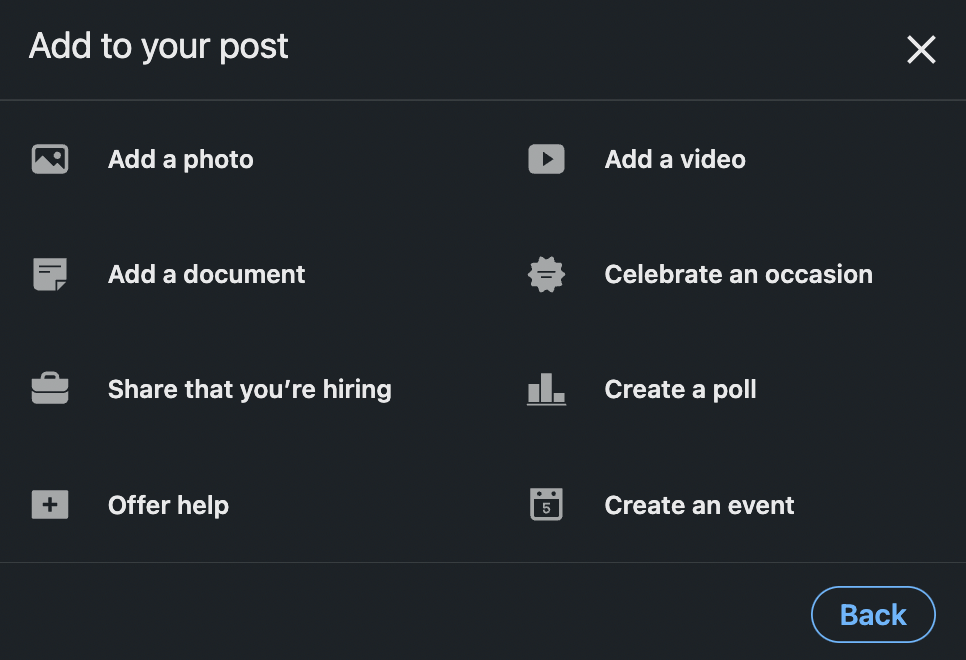
- photos
- videos
- link posts – often used to share important company updates in the form of either internal or external press releases
documents (e.g. PDFs) – one of the most interactive forms of content on LinkedIn, allowing for scrolling through PDFs directly
- polls – you can run a quick survey to get feedback
- occasions – you can celebrate events using this special format
- hiring announcements – you can post a LinkedIn Job offer for free
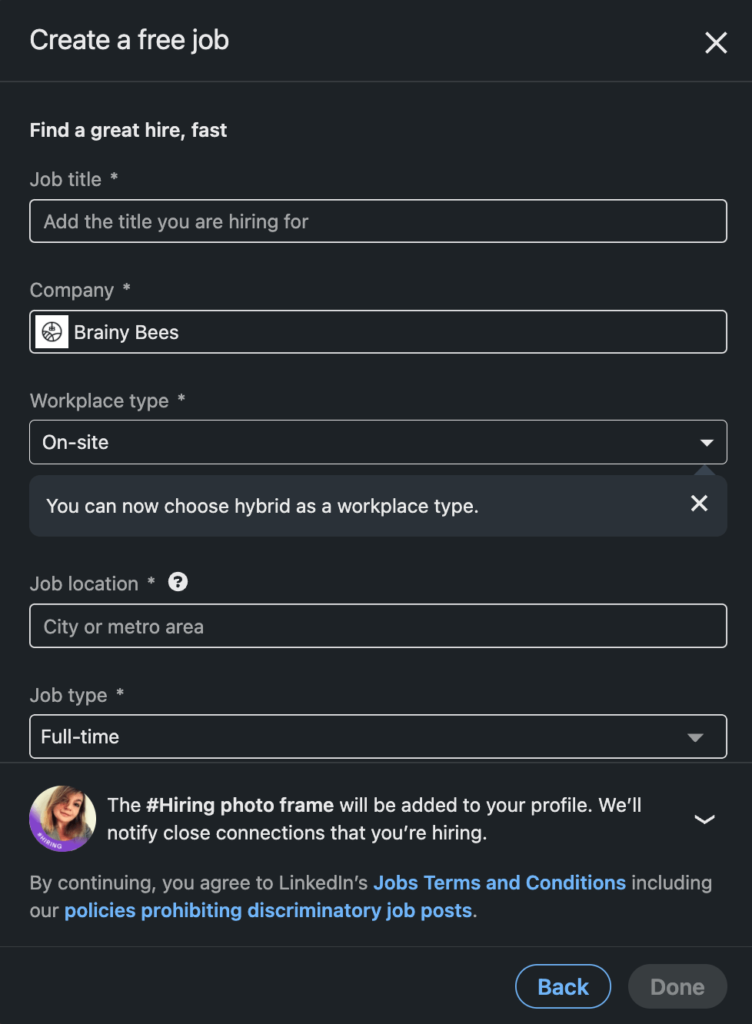
- events
Regardless of the form you choose, make sure your content reflects your brand values. You may want to use some LinkedIn marketing tools to streamline content creation too.
#5 Set up a few series of hashtags
When it comes to LinkedIn strategy, hashtags are your friend. They help you to target your audience more effectively and also make it easier for people to find your content.
In order to best utilize LinkedIn hashtags, set up a few series of hashtags that you can use in each post. This makes it easy to keep track of which hashtags are performing well, and it also means you don’t have to spend time coming up with new ones every time you publish something.
Once you’ve set up your hashtags, be sure to include them in all of your posts. You can also include them in your profile so that people will know which topics you’re interested in, and your business will be consistent. This applies especially to brand hashtags that are very much yours, and yours only.
#6 Consider creating a content calendar
A social media content calendar is a great way to keep track of all the content you publish on LinkedIn. Having one helps you plan ahead and also makes it easier to see which types of content are performing well. Without such a plan, it could be difficult –if not impossible – to oversee your LinkedIn strategy.
There are lots of different ways to create a content calendar, such as using:
- customized templates
- spreadsheets
- project management tools
- social media management tools like Kontentino
With Kontentino, you can manage your LinkedIn profile professionally. We support scheduling both LinkedIn Company Pages and private LinkedIn profiles, so you can easily switch between platforms and complement them with each other’s content.
Once you have a content calendar in place, be sure to stick to it. This will help you stay on track and ensure that your page is always up-to-date.
#7 Think about using LinkedIn Groups and LinkedIn ads
You are not limited to using a Company Page only – Groups on LinkedIn are a great way to connect with potential customers and reach out to new audiences. LinkedIn Groups make it easy to network with like-minded professionals and make a great source of leads. Now is the time to start using them if you aren’t already.
It’s also possible to run LinkedIn ads, which are an excellent way to better target your audience. Advertisers can choose who sees their campaigns, what type of content they want to promote, and how much money to spend. This makes them ideal for targeting specific demographics, as well as for promoting a brand.
Role of personal profiles in supporting your LinkedIn strategy
We have talked about LinkedIn Company Pages in detail. How about your personal profile, though? It turns out that there is a huge potential in combining the efforts of a Company Page and personal profiles in LinkedIn marketing.
LinkedIn personal profiles are the best place to showcase your skills and expertise. They can also be used to connect with potential customers and partners, and they are an integral part of every LinkedIn strategy.
Here are just three examples of how you can combine your LinkedIn profile with your company channels:
Employee advocacy
Employee advocacy is a great way to increase brand awareness and connect with new audiences. If you have employees who are active on LinkedIn, ask them to share your company content with their networks. This will help you reach more people, and it also helps to build trust and credibility for your brand.
This way, your employees can act as advocates for your company – they can promote your products and services, as well as answer questions from potential customers using their personal LinkedIn accounts. Taking this approach can help your business gain more exposure on LinkedIn and create buzz about your offer.
There are a few different ways you can go about setting up an employee advocacy program. You can either give employees guidelines to follow or free reign to post whatever they want so long as it’s related to the company somehow. You can also provide incentives for employees who participate, like giving them extra social media points that they can redeem for prizes.
Whichever route you decide to take, employee advocacy can be a great way for you to run your LinkedIn strategy. It is a very natural way to connect with new audiences and also helps to build trust and credibility for your brand via your employees.
Brand ambassadorship
If you have clients who are passionate about your brand, ask them to become brand ambassadors. Using their own social media channels, they can vouch for your company via posts, messages, comments, or any other form of acclamation. This happens in a natural, meaningful way.
It can help you to build trust with potential customers. When people see that other people have recommended your product or service, they’ll be more eager to try it themselves.
Additionally, brand ambassadors can help you to reach a larger audience on LinkedIn. Their connections and followers can see your content, engage with it, and consider doing business with you. Brand ambassadors can also help to create social proof for your company.
This means that potential customers will be more likely to believe that you’re a credible source of information and products because other people have spoken for you. And since recommendations are the new black for business, you should be sure to make the most of them on LinkedIn.
Social Selling
Social selling is the process of using social media to promote, advertise, and sell your products and services via valuable pieces of content that are not always salesy. LinkedIn is the perfect platform for social selling because it allows you to connect with potential customers in a very personal way.
The key to social selling is to build relationships with potential customers before you try to sell them anything. And while Company Page content may be too invasive for those who don’t know you yet, your network or potential audience on your personal profile may react differently to these touchpoints.
You can, for example, share your Company Page content on your own profile with your own expert comment. Or you can write a long post about your industry and trend, but somehow connect it to what you’re professionally into by linking to a source in the comments.
Social selling isn’t only limited to LinkedIn, though! You need to choose the right social media platform for your business and target groups. While LinkedIn comes as a natural choice for many, it can turn out that also Facebook or even TikTok work in your case.
Benefits of running a successful Linkedin strategy
For those of you who need yet more reasons to test out LinkedIn strategy in your organization, here are a few:
More professional performance
A professional presence can give your company an appearance to match from the perspective of your existing and potential customers. LinkedIn is a good place to post updates about your company, new products or services, and blog articles. You can also share photos and videos of your team in action, or announce new launches and plans. Now that some use LinkedIn as a business card, you don’t want to miss out on that either.
Reach target groups of people
LinkedIn offers a variety of features that allow you to target specific groups of people. You can use LinkedIn Ads to target customers on social media based on their job title, company size, or other factors. You can also use LinkedIn Groups to connect with potential customers who might be interested in what you have to offer.
But even just with organic reach on a Company Page, you can access a large number of people including those who didn’t already know your company existed. LinkedIn has over 770 million users (as of March 2022), so there are lots of potential customers to reach.
By 2025, LinkedIn is expected to reach one billion users according to Statista.
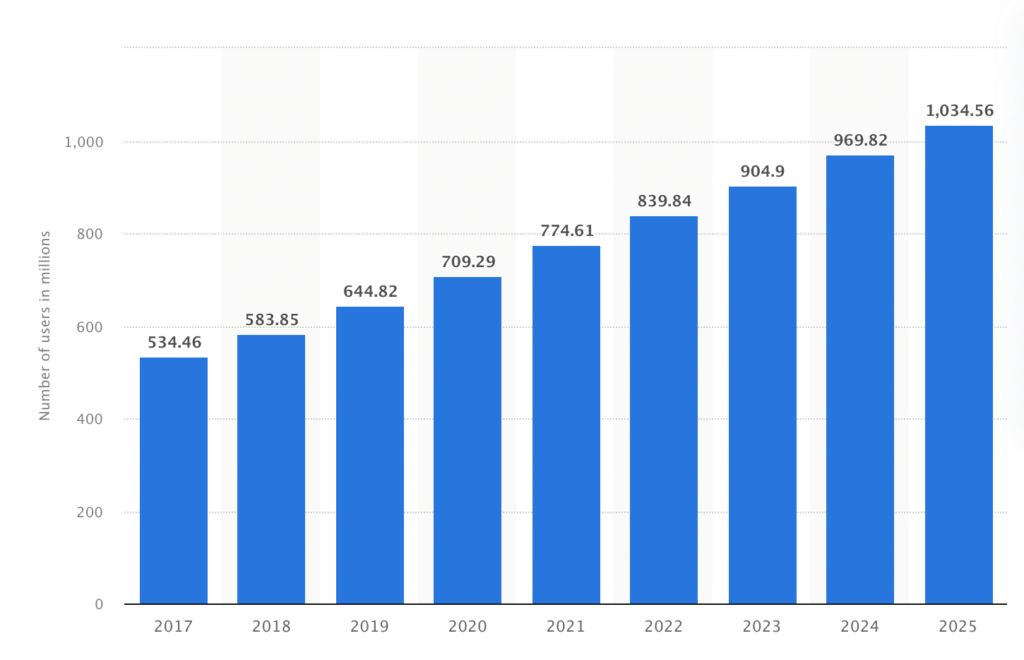
Better employer branding
Many businesses see the benefits of using LinkedIn for employer branding as it can help them attract the best talent. You can post job openings on your Company Page and reach a large number of potential candidates that way.
You can also use LinkedIn to connect with potential employees and get to know them before you offer them a job. Many headhunters begin their candidate screening process on LinkedIn.
LinkedIn is also a popular destination for employees on the lookout for new jobs, and they may also check out your company. Having a strong employer brand will make it easier for you to attract and recruit the right people to your team.
Build thought leadership
LinkedIn can also be used to build thought leadership. You can share blog articles, white papers, and other types of content on LinkedIn. This will help you to establish yourself as an expert in your field, both as yourself and your brand.
When you share valuable content on LinkedIn, people will start to see you as a thought leader in your industry. If you plan quality content on social media profiles (including LinkedIn), you can easily attract more customers and grow your business.
Generate leads, extra traffic, and sales
Speaking of growing your business, LinkedIn can be a huge help with that.
When your brand has a strong presence on LinkedIn, you will see an increase in leads, website traffic, and sales. If you post engaging and interactive content, you are more likely to be discovered by people who are searching for what you offer.
With a solid profile and great content, your target market will be more likely to visit your website or contact you for business opportunities.
Time for your LinkedIn strategy
LinkedIn is a powerful tool for marketing your products and services, and there are a number of different ways to use this platform. The key is to find the strategies that work best for you and your business and then implement them effectively. We hope that you can do that thanks to our article.


